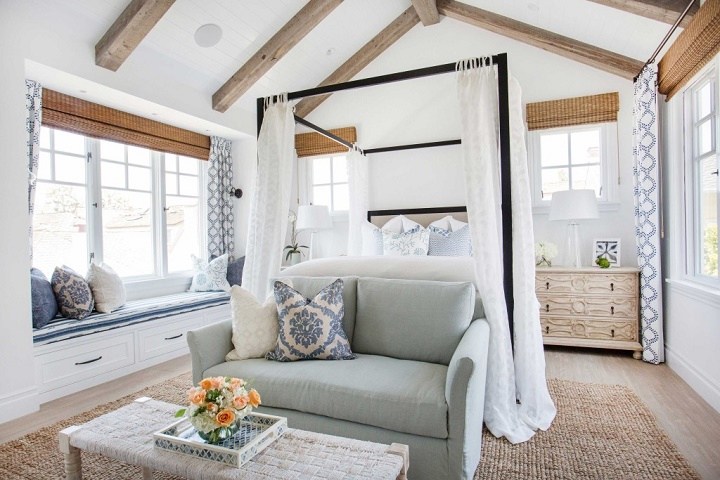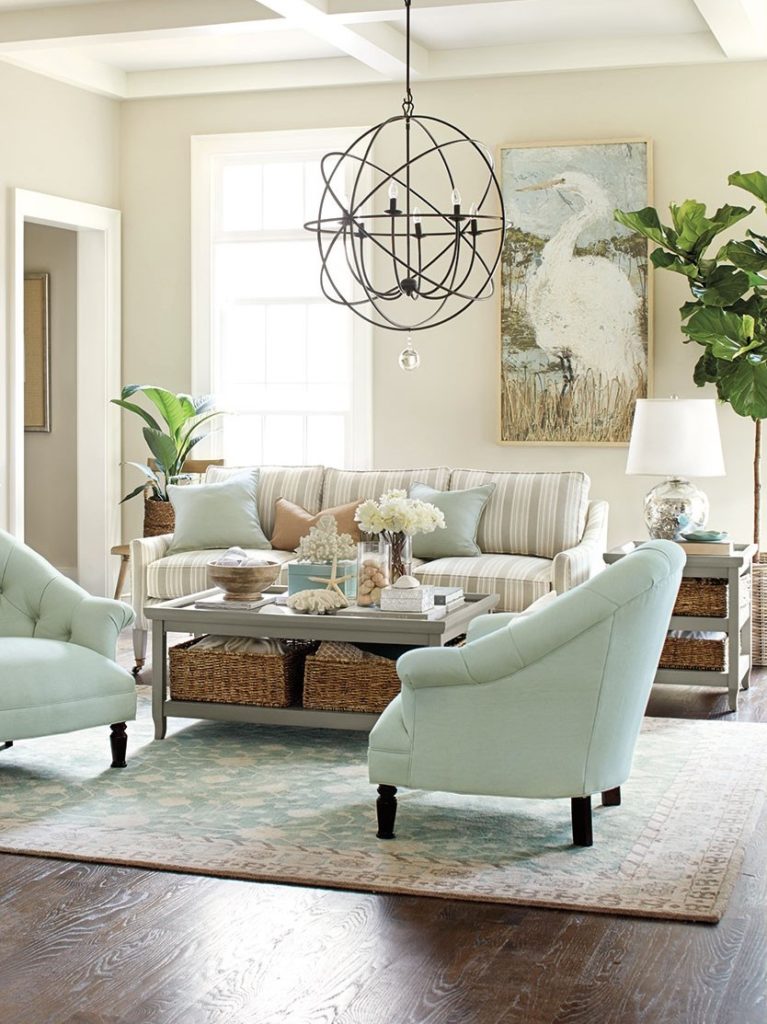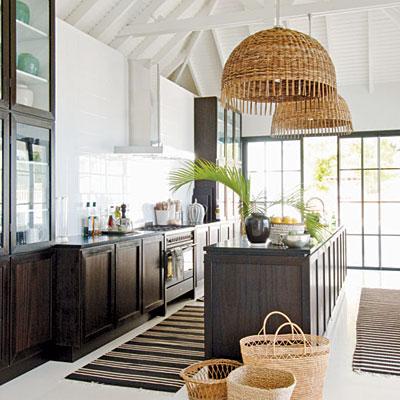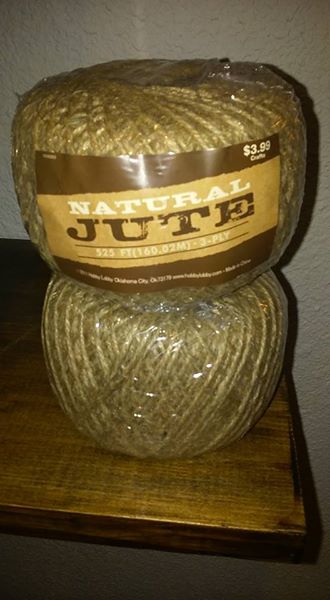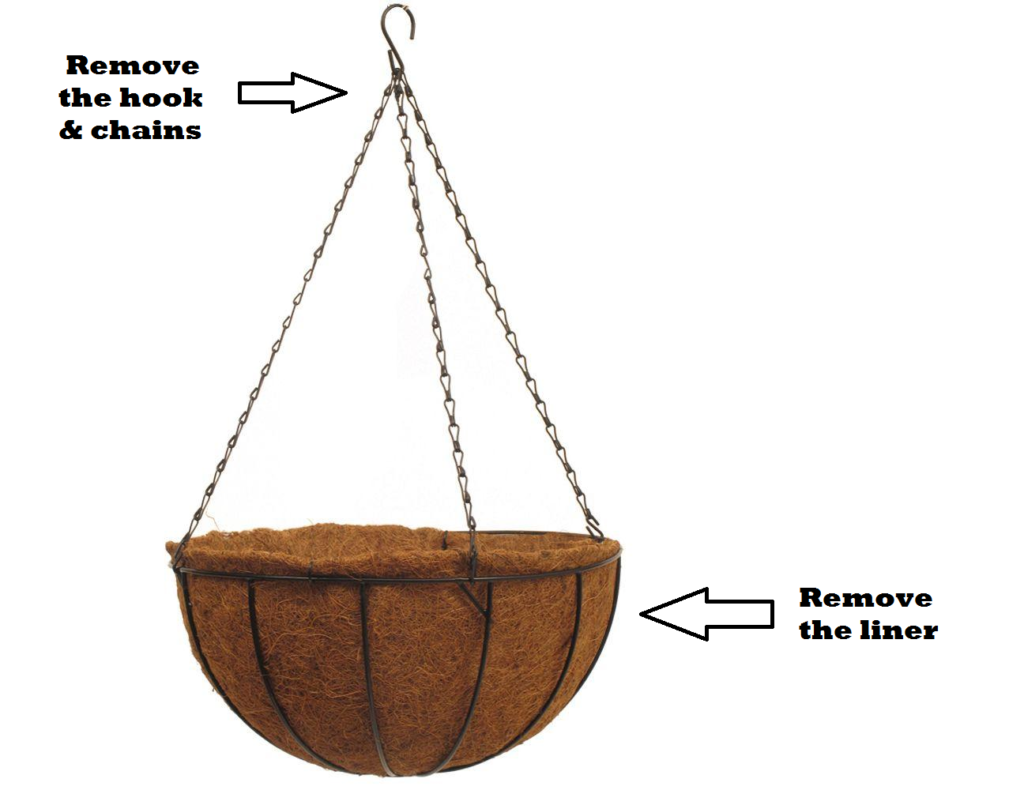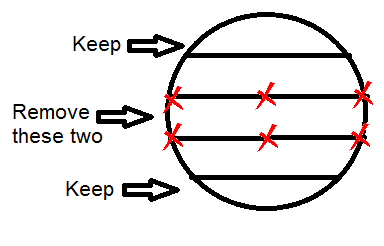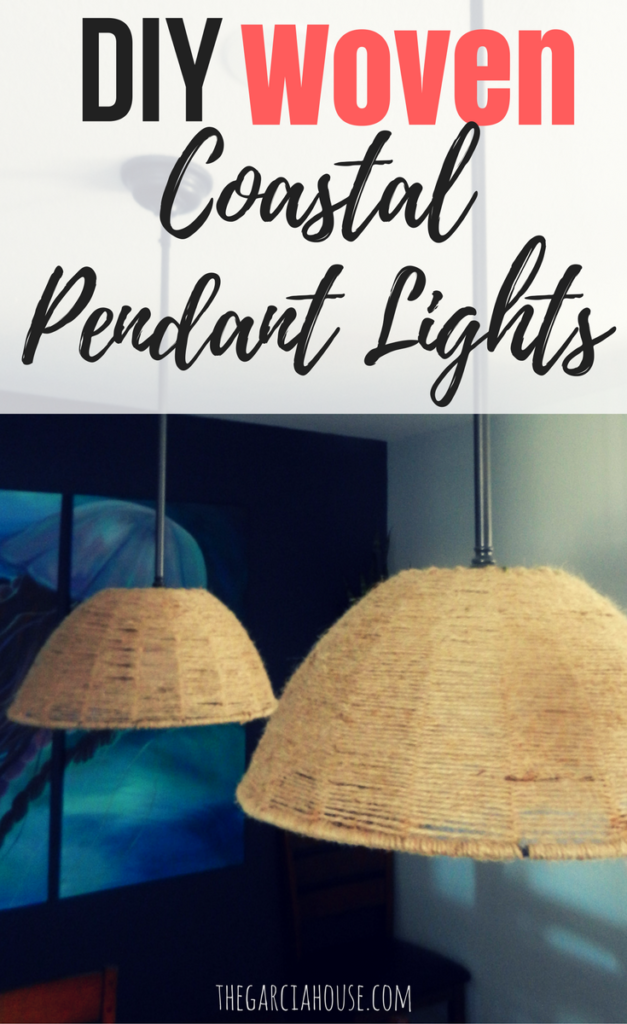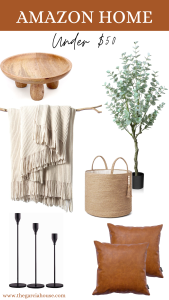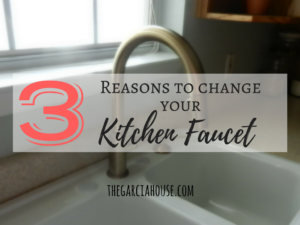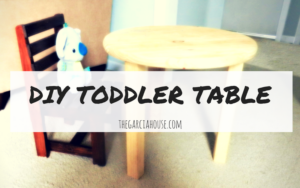I have always loved the ocean. Listening to the sound of the waves, the salty air, the sand between my toes and contact lenses (ok that last one SUCKS but other than that, it's a good time). Naturally, I wanted to bring the elements of the coast into our home to recreate that calm, serene atmosphere without seeming to Hula-Hut beachy if ya know what I mean. Enter Modern Coastal.
One of the staples of coastal decor is natural textiles. Sea grasses, jute, hemp, and sisal make appearances in the form of rugs, woven baskets, light fixtures, and place mats to provide different textural elements in a space. Check out how they were used in these gorgeous rooms:
I just love those rooms! They evoke a sense of calm and relaxation. Now I just need a hammock and a piña colada...oh yeah, blog post. Ahem...
When we made over our dining room, we knew we wanted to add some natural elements to create a modern coastal vibe. We plan to bring in a sisal or jute rug once we install hardwood floors. In the meantime, though, we still needed a way to bring in some texture. I knew from the get-go that the builder grade pendants we had needed to go:
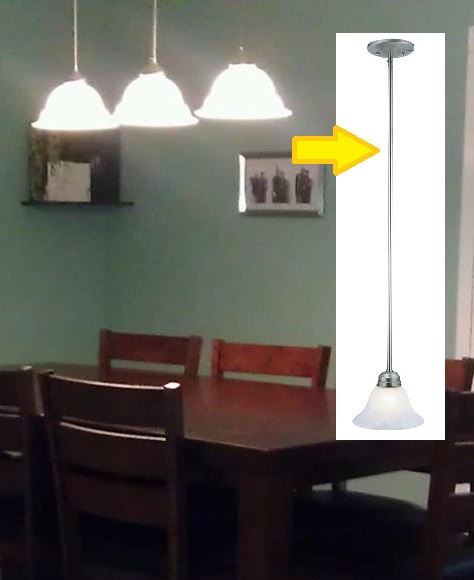 And I've been crushing on woven basket pendants like these:
And I've been crushing on woven basket pendants like these:
Buuuut I wasn't ready to drop a ton of money on replacing them just yet. Just look at that price tag:

I'm still deciding on keeping the pendant look or going with a rectangular chandelier. Since I may change the fixtures in the future, I wanted an inexpensive way to change up our pendants. After researching some options, I decided to try making my own woven pendant covers!
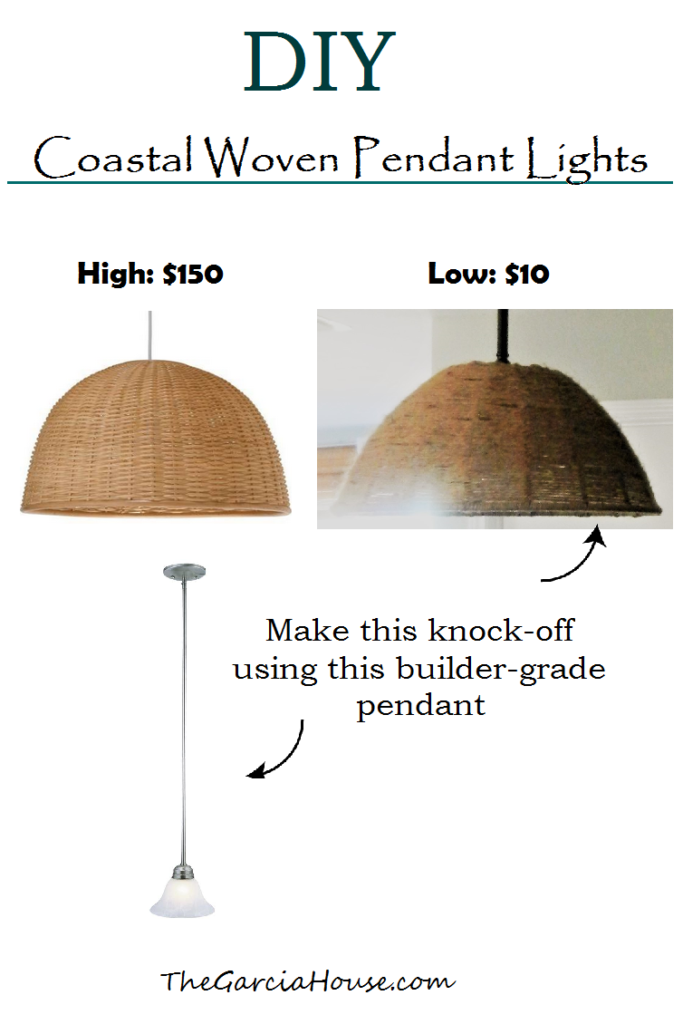 {This post contains affiliate links}
{This post contains affiliate links}
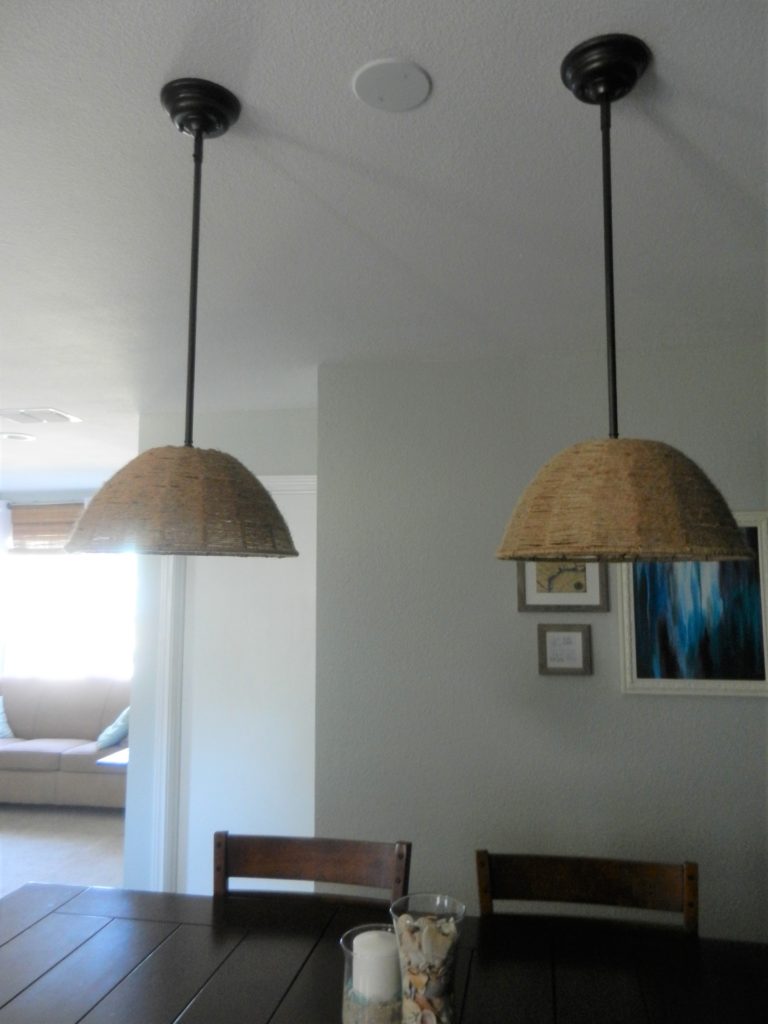 I was able to create these for about $10 each. Here are the exact materials I used and the steps it took to make them 🙂
I was able to create these for about $10 each. Here are the exact materials I used and the steps it took to make them 🙂
-2 hanging planter baskets from Home Depot ($4.98 each)
-2 525ft. Rolls of Jute rope from Hobby Lobby ($3.99 each)
-Oil rubbed bronze spray paint (I already had some, but you can get it for $5.77)
-Scissors
-Painters tape or masking tape
-Sanding block
Step 1. Spray paint the old pendant extension rod and base plate
I took the pendants down, removed the bulb and glass globe, and lightly sanded the surface of the pole and base with my sanding block. Be sure to cover the bulb socket with tape and then apply a few light coats of spray paint. That's all you do for the old pendant parts! Now, let's weave some covers!
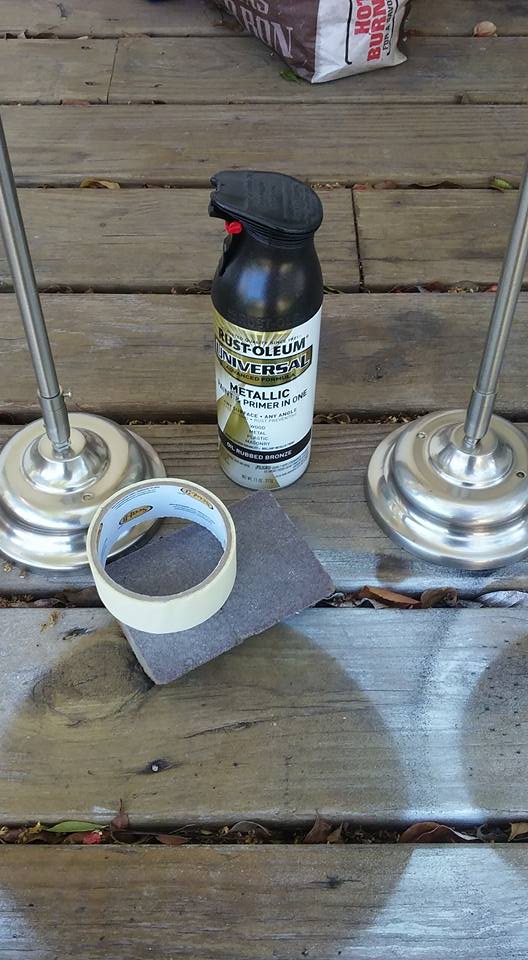 Step 2. Prepping the Hanging Baskets
Step 2. Prepping the Hanging Baskets
I purposefully bought the basket I linked above because the bottom was designed with a smaller, circular opening that could be modified for my bulb/rod to pass through. There were some little tines running across the opening that had to be cut out. I used my Dremmel Max, but if you don't have one, you could probably use some tin snips or gardening sheers. They weren't difficult to remove.
Step 3. Weave the Jute Rope
Hunker down, friends. This step took like FOUR. HOURS. per basket. And I had amazing pictures of me weaving that disappeared, so I present to you some incredibly high-tech renderings of the weaving process:
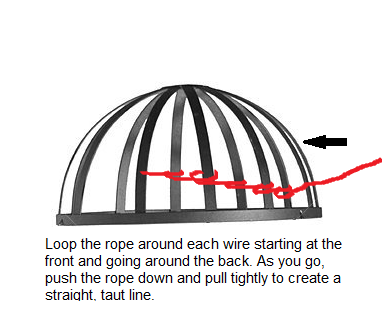 Incredible, is it not? (It's not. I'm sorry.) I flipped the basket over to start at the widest part and work my way up. The roll of Jute is so long that you're unable to continuously weave without getting tangled, so what worked best for me was cutting 4-5 foot lengths at a time and weaving them. When you're nearing the end of your string, tie a knot so that it's hidden inside the dome and cut off any remaining string tail. Pick up right where you left off with another 4-5ft. of rope until you've covered the entire frame.
Incredible, is it not? (It's not. I'm sorry.) I flipped the basket over to start at the widest part and work my way up. The roll of Jute is so long that you're unable to continuously weave without getting tangled, so what worked best for me was cutting 4-5 foot lengths at a time and weaving them. When you're nearing the end of your string, tie a knot so that it's hidden inside the dome and cut off any remaining string tail. Pick up right where you left off with another 4-5ft. of rope until you've covered the entire frame.
Next, I covered the top and bottom rim of the basket with rope by just doing a continuous spiral around it, tying a knot and cutting the string once I made it all the way around.
 Tips: For the best finished product, make sure to always pull any slack out of your rope as you go for a nice tight finish. Squeeze as many rows in as you can to make sure your weaving doesn't look sparse. Big gaps will affect how the light filters through. Make sure all your knots are tied on the inside so you won't see them on the outside once they're hung up. And last but not least, make sure you loop around the vertical tines in the same direction. You'll notice that my pendants have a smooth outer appearance with defined vertical tines inside. See what I mean?
Tips: For the best finished product, make sure to always pull any slack out of your rope as you go for a nice tight finish. Squeeze as many rows in as you can to make sure your weaving doesn't look sparse. Big gaps will affect how the light filters through. Make sure all your knots are tied on the inside so you won't see them on the outside once they're hung up. And last but not least, make sure you loop around the vertical tines in the same direction. You'll notice that my pendants have a smooth outer appearance with defined vertical tines inside. See what I mean?
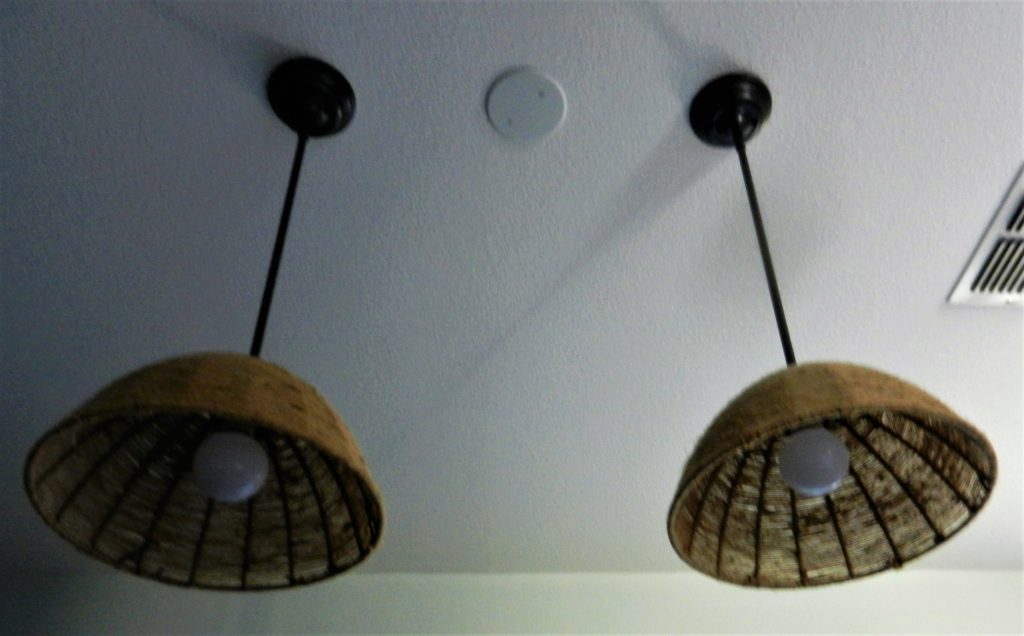 I achieved that look by looping *over* rather than *under*. If you'd rather have the tines appear on the outside, loop under as you work around the basket. If you alternate over-under, well, honestly I'm not sure how that'd turn out.
I achieved that look by looping *over* rather than *under*. If you'd rather have the tines appear on the outside, loop under as you work around the basket. If you alternate over-under, well, honestly I'm not sure how that'd turn out.
Step 4. Hang your creations!
Re-mount your newly painted fixture base and poles. Lift your woven pendant shades and maneuver the pole through the small opening created earlier. Screw in your light bulbs, and you're all done!
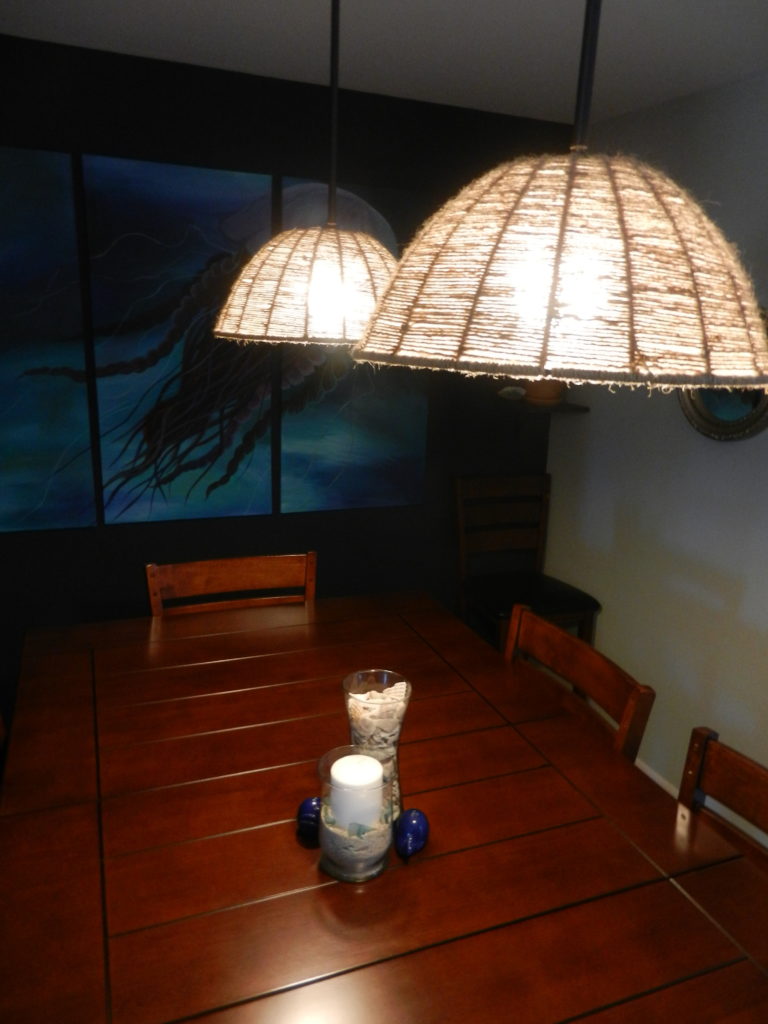
I hope you enjoyed this tutorial! If you have any questions, just let me know in the comments and I'll do my best to answer them! 🙂
Save
Save
Save
Save
Save
Save
Save
Save
